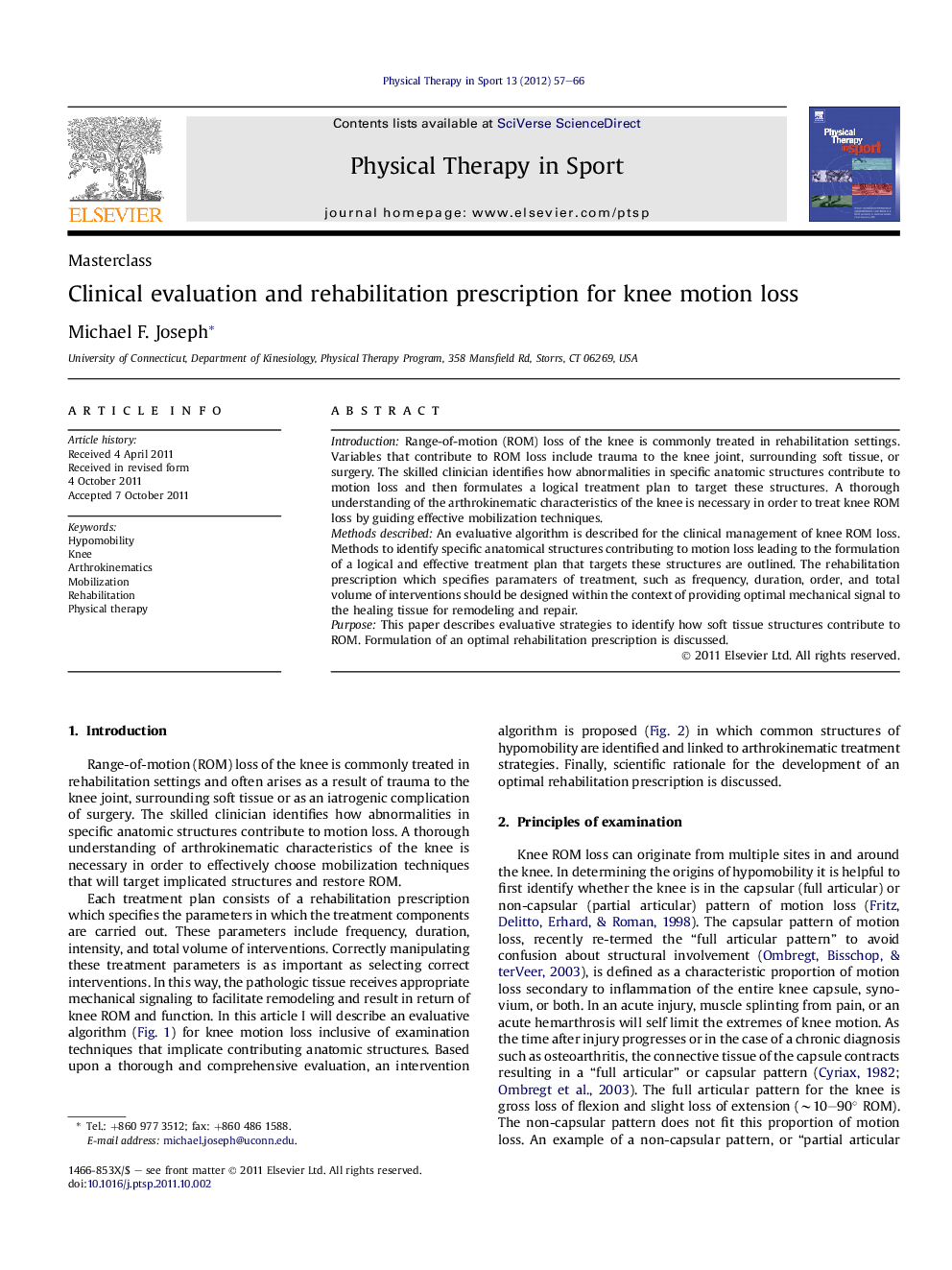| Article ID | Journal | Published Year | Pages | File Type |
|---|---|---|---|---|
| 2704274 | Physical Therapy in Sport | 2012 | 10 Pages |
IntroductionRange-of-motion (ROM) loss of the knee is commonly treated in rehabilitation settings. Variables that contribute to ROM loss include trauma to the knee joint, surrounding soft tissue, or surgery. The skilled clinician identifies how abnormalities in specific anatomic structures contribute to motion loss and then formulates a logical treatment plan to target these structures. A thorough understanding of the arthrokinematic characteristics of the knee is necessary in order to treat knee ROM loss by guiding effective mobilization techniques.Methods describedAn evaluative algorithm is described for the clinical management of knee ROM loss. Methods to identify specific anatomical structures contributing to motion loss leading to the formulation of a logical and effective treatment plan that targets these structures are outlined. The rehabilitation prescription which specifies paramaters of treatment, such as frequency, duration, order, and total volume of interventions should be designed within the context of providing optimal mechanical signal to the healing tissue for remodeling and repair.PurposeThis paper describes evaluative strategies to identify how soft tissue structures contribute to ROM. Formulation of an optimal rehabilitation prescription is discussed.
